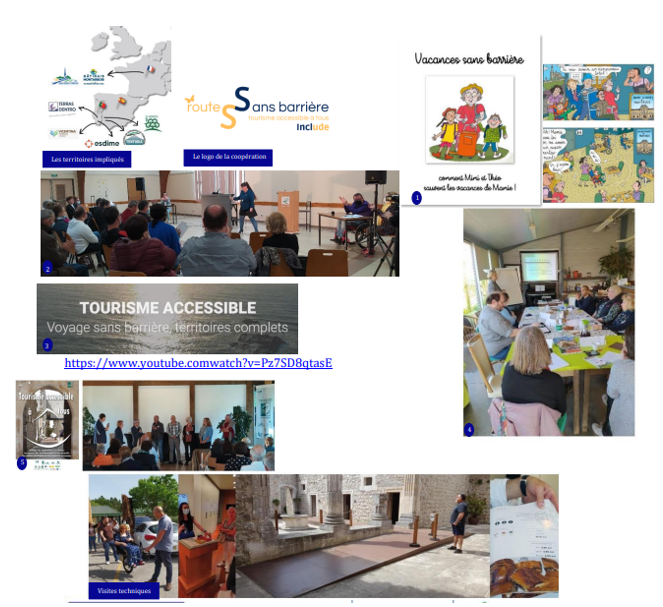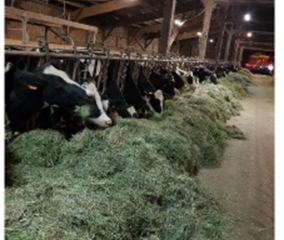Transnational cooperation – Accessible tourism
France
Introduction
The strategy of the GAL Pithiverais & Gâtinais for the 2014-2022 program aimed to establish itself as a natural and cultural tourism territory between the Île-de-France and the Loire Valley. At the heart of local tourism offerings, the lack of facilities and services allowing universal accessibility quickly became an intolerable and significant barrier. This is a major societal challenge, however, since disability, whether visible or invisible, permanent or temporary, prevents all forms of inclusion. But “barrier-free” tourism will benefit everyone, locals and visitors alike, not just people with disabilities or reduced independence. It also makes it possible to envisage tourism development with a high economic potential, and with a highly differentiating character, through the positive image conveyed. This is the conclusion we have reached collectively, at the end of a three-year transnational LEADER cooperation project with our five Spanish and Portuguese partners. “Holiday without a barrier” has become for us a noble approach, and we are committed to pursuing it!
Presentation of the project
Transnational cooperation brought together six LAGs: three in Portugal, two in Spain and one in France. The strategy of the GAL Pithiverais & Gâtinais was, for the 2014-2022 program, focused on the development of tourism in the territory. Cooperation was aimed at improving the universal accessibility of the territory so that all inhabitants and tourists could benefit from facilitated access conditions. The objective was to develop, mainly through the capitalization of knowledge and the exchange of good practices, “barrier-free tourism” in the partner territories by promoting accessibility both in terms of signage and in the capacity to receive any public, whatever their situation. For the French territory (two PETRs constituting the LAG), the awareness-raising axes were divided into five actions. 1. Published a comic strip “Holidays without Barriers”, in collaboration with the cartoonist Bernadette Despres, famous for the “Adventures of Tom-Tom and Nana” and resident of our LAG territory. This comic has been created, translated into all three languages and is distributed free of charge. 2. Adaptation of a Portuguese play that becomes “Who Wants to Win Inclusion?” and its broadcast on the two LAG PETRs, in the presence of people with disabilities. 3. Production of a video to show the work done during the three-year cooperation project. 4. Training measures for members of the tourism sector in LAG territory. These training courses, provided by persons with disabilities, were designed to raise awareness among professionals of the issues faced by persons with disabilities, whether visible or invisible, through immersive experiences. 5. Organization of an international symposium, which closed the cooperation. In the morning, representatives of the three countries presented the common challenges, solutions and good practices to make the sites accessible to all. In the afternoon, disability workshops were offered by trainers who were themselves concerned with a limitation of one of the four types of disability (blindness, deafness, mental or physical) in question.
The objectives of capitalizing knowledge have been achieved through the various actions. Through peer-to-peer discussion and experimentation in pioneering places on the subject, it was possible to share good practices in order to export them to others. The LEADER funding (French territories) amounted to €30,370.67. This allocation made it possible to finance the expenditure necessary for the implementation of the cooperation project, primarily travel within each of the territories. Without these technical visits, upstream of the actions and during the program, the cooperation actors would not have been able to experiment on their own with the equipment allowing better accessibility. The impact on their ability to mobilize on our territory would not have been the same. Participants in these various actions have become local drivers in adapting the territory to make it universally accessible.
The emblematic character of the project
The collective consideration of tourism and disability was never addressed until the implementation of the “Accessible Tourism” cooperation project. In itself, this is already a first territorial innovation! Another innovation factor is the scale of implementation of actions: that of a territory. First challenge: today, tourism stakeholders are rethinking themselves and thinking about accessibility and disability ahead of the projects they carry out. It is this paradigm shift that is another emblematic element of this action. This is accompanied by a change in practice and vocabulary. From now on, the concept of ‘use’ is predominant over that of ‘regulation’. This is initiating social and societal change so that accessibility becomes the norm and not the exception. The project is also emblematic, because we are the only LAG in the Center-Val de Loire region to have achieved transnational cooperation! The transferability of this project can be achieved by capitalizing on the co-development process of the project, the deliverables that have been created (comic strip, play, training cycle, conference and video). Convinced of the decisive nature of our action, the actors are already considering other tools that could be put in place without cooperation, such as a guide to legislation on accessibility (what simple and inexpensive means to achieve to be in compliance with the law while ensuring that the tools are actually usable by the people to whom they are dedicated?), the provision of digital tools (3D, Braille printer…) with partners of the circular economy, the recruitment of a PhD student… If we had not taken this “step aside” with foreign territories, we would have limited ourselves to the usual practice with regard to the circular economy French legislation.
Pictures

PETR Beauce Gâtinais en Pithiverais
Pithiverais & Gâtinais
Centre-Val de Loire

